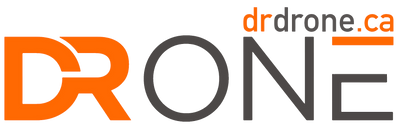Thermal imagery captured by a drone is particularly useful for utility and construction-related inspections. They are able to detect concerns such as missing or damaged installation, water under roof membranes, external electrical difficulties, failing windows, and a variety of other issues. Drones equipped with thermal cameras may inspect solar panels to detect manufacturing problems, cracks, faulty interconnectors, and temporary shadowing, among other issues. In addition to its ability to detect and highlight faults that could otherwise go undetected during a visual inspection, a thermal camera has other advantages. In order to bring about efficient resolutions, operators rely on data to make informed and timely judgments.
Working in the hazardous materials industry, where volatile and toxic compounds are present, is a high-risk business proposition. When doing this type of inspection, drones can save time and money by removing the need for humans to physically access the location. The use of drones for HazMat inspections is becoming increasingly popular, as they can detect substances such as vapour, chemicals, and radioactive materials. In turn, this minimizes the amount of entries that employees must make, which improves safety while also speeding up the inspection process overall. While boosting safety, drones are capable of streaming footage or collecting data that may be shared remotely to assist with decision-making.



